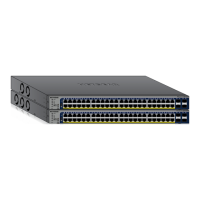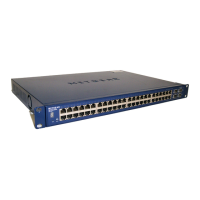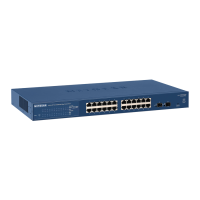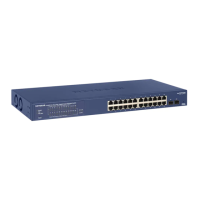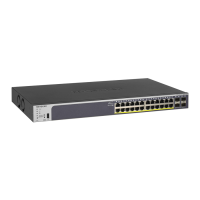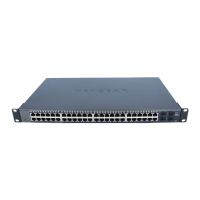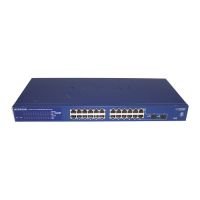Managing Device Security
169
GS752TP, GS728TP, and GS728TPP Gigabit Smart Switches
• Local. The user's locally stored ID and password is used for authentication. Since the
local method does not time out, if you select this option as the first method, no other
method is tried, even if you have specified more than one method.
• RADIUS.
The user's ID and password is authenticated using the RADIUS server
. If
you select RADIUS or TACACS+ as the first method and an error occurs during the
authentication, the switch uses Method 2 to authenticate the user.
• T
ACACS+. The user's ID and password is authenticated using the TACACS+ server.
If you select RADIUS or
TACACS+ as the first method and an error occurs during the
authentication, the switch attempts user authentication method 2.
• None. The authentication method is unspecified. This option is available only for
method 2 and method 3.
Note: Each authentication protocol can use up to three authentication
methods. Local and None must be the last methods. You cannot
configure methods after these two options.
4. From the list in the 2 column, select the authentication method, if any, that must appear
second in the selected authentication login list.
Use this method if the first method times out.
If you select a method that does not time out as the second method, the third method is
not tried. This parameter does not appear when you first create a login list.
5. From the list in the 3 column, select the authentication method, if any, that must appear third
in the selected authentication login list.
This parameter does not appear when you first create a login list.
6. Click APPLY
to update the switch with the HTTPS Authentication settings.
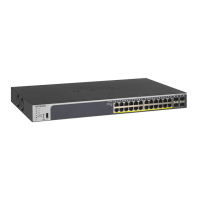
